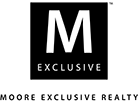Mortgage Insurance insures the lender from loss, if the borrower is unable to pay back their mortgage. It is required on loans that are more than 80% of the property’s purchase price and vary significantly between conventional loans and government insured loans. Buyers obtaining conventional loans with less than 20% down will be required to obtain a Private Mortgage Insurance (PMI). PMI is added to the monthly payment. The annual cost can range from .3% to 1.20% of the loan amount depending upon the amount of down payment.
Federal Housing and Urban Development (HUD) insures Federal Housing Association (FHA) loans through a required upfront mortgage insurance premium (UFMIP) and a monthly mortgage insurance premium (MIP). The UFMIP is normally financed into the loan and equal to 1.75% of the loan amount. MIP varies depending upon the amount of down payment and ranges from .45% annually on the 90% 15 year term mortgage to 1.35% annually on a 95% 30 year term loan.
You may wonder why someone would obtain an FHA insured loan versus a conventional loan since the cost on government insured loans is more expensive. The answer is FHA loan qualification ratios are more lenient allowing a buyer to qualify for a loan that they would not otherwise qualify. See our post on Determining Your Maximum Purchasing Power which discusses the different ratios used in conventional and FHA insured loans.
